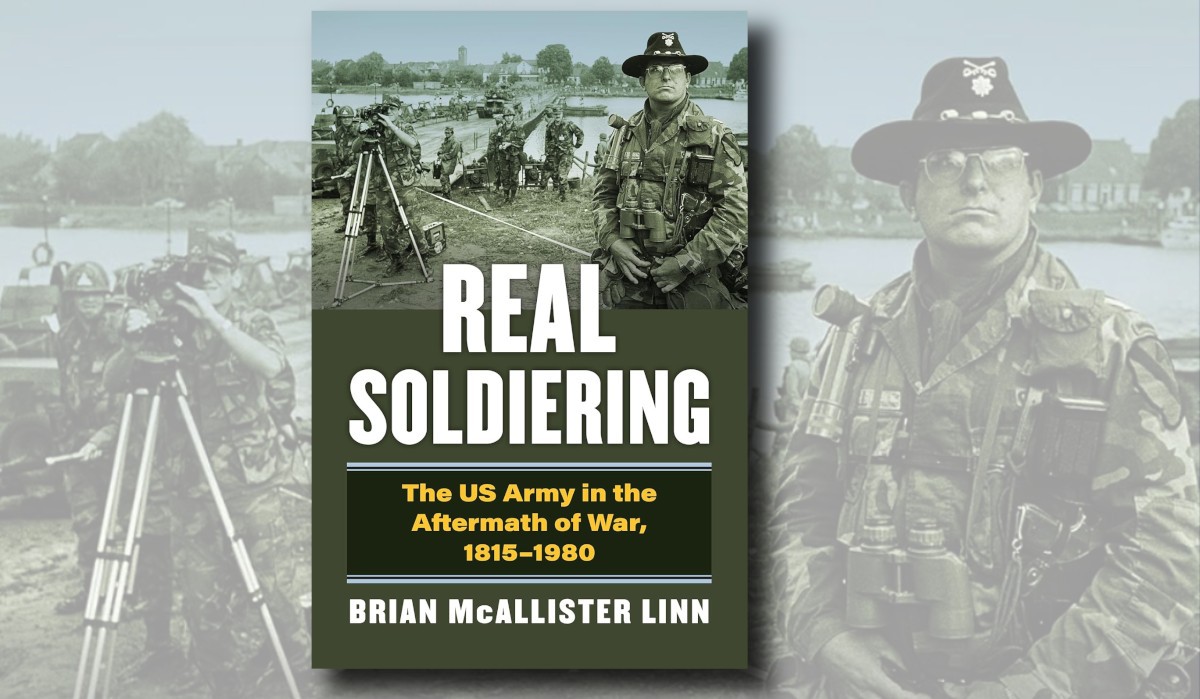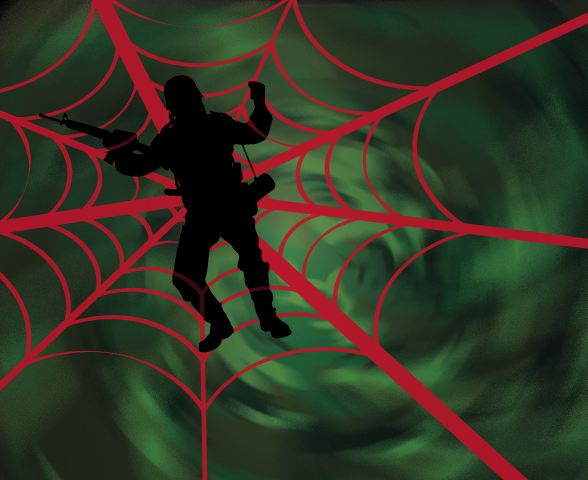Victorious warriors win first and then go to war, while defeated warriors go to war first and then seek to win.
Sun Tzu
Source: Australian War Memorial (P03308.002)
Introduction
The Australian Army has an extensive history of conducting train, advise and assist (TAA) missions. These missions represent a flexible, scalable and low-risk component of national strategy. The Defence Strategic Update[i] (DSU) highlighted the requirement to shape, deter and respond to challenges within the Indo-Pacific region. In describing the shaping function, the DSU highlights the requirement to continually develop our relationships with regional partners.[ii] The reason is that the capacity to shape and influence such relationships is critical for the successful avoidance of war. Importantly, if conflict does break out, it can set the conditions for military success.
This Land Power Forum Post will examine the conduct of TAA missions through the lens of two historic examples – the 8th Military District in 1941 and Robin Force in New Caledonia, highlighting the roles they played, or could have played, in the vital lead-up to war with the Japanese.
The Role of Train, Advise and Assist Missions
The increasing utilisation of Chinese coercive grey zone tactics, including in the cyber domain, demonstrates the requirement not only for traditional TAA engagement but also the evolution of the capabilities employed in its execution. For example, the Chinese Government has embedded TAA missions as a part of its ‘Belt and Road Initiative’, with training assistance operating in Vanuatu, Samoa, Cook Islands and Papua New Guinea.[iii] In response, the United States has reinvigorated its own training missions throughout the Indo-Pacific. Such efforts are often welcomed by host nations as US training and assistance is frequently seen as less coercive than Chinese economic and military aid.[iv]
While contemporary international strategy has been the catalyst for renewed interest in TAA missions as means of shaping and influencing international relationships, such missions have a much longer history. In the Australian Army context, for example, TAA missions have historically played a significant role in relationship-building measures. Key examples include ‘The Team’ in Vietnam and TAA Missions were the main effort for the ADF in Afghanistan from 2014-2021.[v] Notably, TAA missions are not the sole domain of the military. The Australian Federal Police has a long history of supporting the development of host nation's policing capability. Other elements of the Australian government also work to develop Indo Pacific nation’s economies through imports, developing labour and education and tourism.
During the Second World War, Australia was presented with opportunities to shape the operational environment and set the conditionals for success in future military operations. TAA missions comprised a key component of Australian strategy, both in New Guinea and in New Caledonia, each with differing degrees of effectiveness.
New Guinea, 1941
The Australian Army’s 8th Military District, which comprised Papua, New Guinea, the Solomon Islands and the New Hebrides, was commanded by Brigadier Basil Morris from May 1941.[vi] The critical role that New Guinea would play in the defence of Australia was not anticipated by Morris nor Army. Brigadier Morris was not a dynamic thinker and he squandered the time and resources that he had before December 1941.[vii]
The 1942 New Guinea campaign was hamstrung by a range of issues that could have been mitigated through a well-planned TAA mission. Operations along the Kokoda Track experience a lack of logistics support, a dearth of maps, and a rudimentary understanding of the terrain. Whilst there was significant native manpower available, it had not been organised nor trained. Port Moresby’s maritime infrastructure lacked personnel, equipment and defences. These problems were foreseeable and could have been pre-empted with an energetic TAA mission.
Following the deployment of an initial 200-man advance element in June 1940, the 49th Battalion was fully deployed to Port Moresby in March 1941. These troops were mainly employed in digging defensive positions, building roads and stevedoring. No training was provided to prepare them for combat. Indeed, when Lieutenant General Sturdee, Chief of the General Staff, inspected them in July 1941, he described them as ‘quite the worst battalion in Australia.’[viii] Critically, nothing had been done to mobilise the local workforce for fighting, stevedoring or logistics support.
The experience in Papua in 1941 highlighted the effects of poor pre-conflict planning and execution. While the Papuan Infantry Battalion (PIB) was established in 1940, the Australian New Guinea Administrative Unit (ANGAU), tasked with the civil administration of Papua and New Guinea, was not formed until March 1942. Had it been established earlier, it could have been substantially augmented the labour force in Port Moresby, freeing the troops for training and reconnaissance before the arrival of the Japanese. Developing dual-use infrastructure, such as ports and wharves, could have provided an economic stimulus for Papua as well as provided a significant boost to capacity once the South West Pacific Area transitioned to a wartime footing.
A small Australian training team could have mapped the terrain, developed relationships with the local population, supported the augmentation of commercial infrastructure and helped develop the nascent PIB. Had a TAA mission developed a stevedoring force of local nationals, it would have enabled the troops stationed in Port Moresby to focus on training rather than labouring on the docks. Instead of the Japanese facing a largely untrained militia during the early stage of their New Guinea campaign, they could have been opposed by a well-trained militia, with adequate logistic support, who were comfortable operating in the jungle, operating in conjunction with a well-trained and well equipped PIB
Robin Force in New Caledonia
New Caledonia was recognised early in the Second World War as an island of strategic significance, lying across the sea lines of communications between Australia and the United States. The strategic value of the archipelago became evident when Noumea grew into the second largest port by tonnage in the Pacific theatre (San Francisco was the largest). The strategic importance of this port, however, appears to have been overlooked by the Australian Government at the time.
Australian support for New Caledonia commenced with the landing of Henri Sautot, the newly appointed Free French Governor of New Caledonia, in September 1940. Sautot led a rebellion against the Vichy government in New Caledonia.[ix]
Later, in June 1941 a detachment of Australian gunners and engineers deployed to New Caledonia. Known as the ‘Robin Force’, the detachment was later joined by the men of the 2/3rd Independent Company. These soldiers were hurriedly deployed to reinforce the garrison following the Japanese entry into the war. On their departure from Australia, Lieutenant John Winterflood was told they the company ‘had been written off and would not be returning to Australia.’[x] Their role was to support the Free French Government install 2 6-inch guns to protect Noumea, develop infrastructure, monitor pro-Vichy forces, and to train the local militia.[xi] Robin Force was responsible for sabotaging the nickel mines in response to any hostile Japanese landing, after which they were to conduct guerrilla operations.
Robin Force was an excellent example of how TAA missions can work effectively. Not only were the soldiers of the 2/3rd Independent Company able to train Free French troops on the islands, but they also assisted with road construction, repaired vehicles and constructed a radio network. Once US troops started to concentrate in New Caledonia in March 1942, they sought the assistance of Robin Force which provided jungle warfare training to the untrained American troops.
While the achievements of Robin Force were self-evident, they were more the result of the hard work and initiative demonstrated by the soldiers than of good planning. There were only spasmodic communications from Australia, no logistic or financial support. Indeed, the soldiers were not even paid. The lack of support highlights the stress that Army was under in the early days of 1942, but also highlights the effectiveness of well trained and motivated troops who seize the initiative.
Strategic Impact
The efforts of the Australian Army’s 8th Military District in New Guinea, and Robin Force in New Caledonia, differed substantially in their respective levels of coordination. In the case of the 8th Military District, time and effort was wasted on non-military tasks, and little attempt was made to involve the local population in measures to prepare for war against the Japanese. The result was that Australian troops were poorly prepared for jungle warfare. The price for these omissions was paid in the unnecessary loss of life of Australians, allies and locals alike. By contrast, in the face of a clear and present danger to Australia’s strategic interests, Robin Force helped produce well-trained host nation troops and generated infrastructure that directly supported the war effort. Most importantly, it seized the initiative to prepare for an invasion by operating in close liaison with the local Government. Australian intervention in New Caledonia also reaped dividends at the strategic level. For example, when New Caledonia began supporting the Free French, it ceased shipping nickel to Germany. This ore output was subsequently purchased by BHP [xii] through an arrangement with the Australian Government with the objective of supporting the New Caledonian economy[xiii], bolstering Australian production and denying an important and much needed resource to Germany.
Conclusion
Successful train, advise and assist missions require foresight, trained soldiers and coordination within a whole of nation effort. As history has demonstrated, TAA missions need to be developed based on the needs of the host nation, and focused on the likely types of conflict expected. As a part of a joint, whole of government operation, Army TAA missions can act as force multipliers across all elements of national power - diplomatic, informational, military and economic. As demonstrated by Robin Force in New Caledonia, these missions can play a pivotal role in Australian strategy as we seek to shape, deter and respond to threats to the national interest.
This article is a submission to the Winter Series 2023 Short Writing Competition, 'Army’s Role in Train, Advise and Assist Missions'.
[i] Department of Defence, 2020 Defence Strategic Update, Canberra, Commonwealth of Australia, p. 24.
[ii] Department of Defence, 2020 Defence Strategic Update, Canberra, Commonwealth of Australia, p. 26.
[iii] Australian National University, 6 May, 2022, ‘Unpacking Solomon Islands’ security pact with China’.
[iv] B. Lin, M. Chase, J. Blank, C. Cooper, D. Grossman, S. Harold, J. Moroney, L. Morris, L. Ma, P. Orner, A. Shih, & S. Kim, Regional Responses to U.S.-China Competition in the Indo-Pacific. RAND Corporation, Santa Monica, 2020, p. 74.
[v] A. Hocking, 2022. Preparing for the Future, Key Organisational Lessons from the Afghanistan Campaign, The Vanguard, Occassional Paper Series, No 2.Department of Defence, Canberra, p. 7.
[vi] A. J. Sweeting, 'Morris, Basil Moorhouse (1888–1975)', Australian Dictionary of Biography, National Centre of Biography, Australian National University.
[vii] P. Brune, Those Ragged Bloody Heroes. Allen and Unwin, Crows Nest, 1991.
[viii] P. Brune, Those Ragged Bloody Heroes. Allen and Unwin, Crows Nest, 1991.
[ix] J. Lawrey, The Cross of Lorraine in the South Pacific, The Journal of Pacific History, Canberra, 1980, p. 36.
[x] G. Blake, The Australian Army’s Independent Companies and Commandos 1940 – 1945. UNSW Canberra, 2019, p. 100.
[xi] G. Blake, The Australian Army’s Independent Companies and Commandos 1940-1945. UNSW, Canberra, 2019, Royal Australian Artillery Historical Company, p. 96.
[xii] H. Daly, The Opportune Assistance from Australia to New Caledonia 1940 – 1945, Cannonball, No 95, Winter 2019, p. 75.
[xiii] J. Lawrey, The Cross of Lorraine in the South Pacific, The Journal of Pacific History, Canberra, 1980, p. 27.




